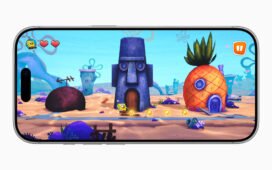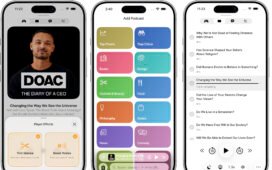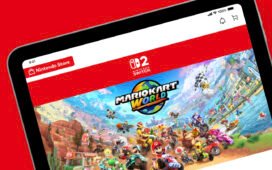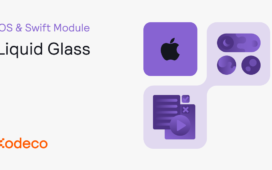Samsung Galaxy XR is here, powered by Android XR! This blog post is part of our Android XR Spotlight Week, where we provide resources—blog posts, videos, sample code, and more—all designed to help you learn, build, and prepare your apps for Android XR.
There’s never been a better time to get into XR development. Last December, we announced Android XR, Google’s new Android platform built on open standards such as OpenXR and Vulkan, which makes XR development more accessible than it’s ever been.
No matter whether you’ve done XR development before or not, we want to help you get started.
This blog will get you up and running with Android XR and Unity development. We’ll focus on the practical steps to configure your environment, understand the package ecosystem, and start building.
By the end of this blog, you’ll have a good understanding of:
-
The package ecosystem
-
Essential setup steps
-
Input methods
-
Privacy and permissions
-
Composition layers
Unity for Android XR development
You might choose Unity for its cross-platform compatibility, allowing you to build once and deploy to Android XR and other XR devices.
When using Unity, you benefit from its mature XR ecosystem and tooling. It already has established packages such as XR Interaction Toolkit, OpenXR plugin, XR composition layers, XR Hands, an extensive asset store full of XR-ready components and templates, and XR simulation and testing tools. And since Unity 6 was released last November, you’ll also benefit from its improved Universal Render Pipeline (URP) performance, better Vulkan graphics support, and enhanced build profiles.
Here are some sample projects to get an idea of what can be done:
Essential setup: your development foundation
Unity 6 requirements and installation
You’ll need Unity 6 to create your app, as earlier versions don’t support Android XR. Install Unity Hub first, then Unity 6 with the Android Build Support module, following these steps.
Android XR build profiles: simplifying configuration
Unity build profiles are project assets that store your platform-specific settings and configurations. So instead of needing to manually set up 15-20 different settings across multiple menus, you can use a build profile to do this automatically.
You can create your own build profiles, but for now we recommend using the dedicated Android XR build profile we created.
If you make any changes of your own, you can then create a new build profile to share with your team. This way you ensure consistent build experience across the board.
After these steps you can build and run your APK for Android XR devices.
Graphics API: why Vulkan matters
Once you have your Unity project set up with an Android XR build profile, we first recommend making sure you have Vulkan set as your graphics API. Android XR is built as a Vulkan-first platform. In March 2025, Google announced that Vulkan is now the official graphics API for Android. It’s a modern, low-level graphics API that helps developers maximize the performance of modern GPUs and unlocks advanced features like ray-tracing and multithreading for realistic and immersive gaming visuals.
These standards provide the best compatibility for your existing applications and ease the issues and costs of porting. And it makes it possible to enable advanced Android XR features such as URP Application Space Warp and foveated rendering.
Unity 6 handles Vulkan automatically, so when you use the Android XR build profile, Unity will configure Vulkan as your graphics API. This ensures you get access to all the advanced Android XR features without any manual configuration.
You can verify your graphics API settings by going to ‘Edit’ >’ Project Settings’ > ‘Player’ > ‘Android tab’ > ‘Other settings’ > ‘Graphics APIs’.
Understanding the package ecosystem
There are two different packages you can use for Android XR in Unity. One is by using the Android XR Extensions for Unity, and the other is using the Unity OpenXR: Android XR package.
These may sound like the same thing, but bear with me.
The Unity OpenXR: Android XR package is the official Unity package for Android XR support. It provides the majority of Android XR features, made available through OpenXR standards. It also enables AR Foundation integration for mixed reality features. The primary benefit of using the Unity OpenXR: Android XR package is that it offers a unified API for supporting XR devices.
How to install packages
To add a new package, with your project open in Unity, select ‘Window’ > ‘Package Management’ > ‘Package Manager’.
From here you can install these packages from the ‘Unity Registry’ tab:
Required OpenXR features
Now you have the packages you need installed, let’s enable some core features in order to get our project working.You can enable OpenXR setting for Android: ‘Edit’ -> ‘Project Settings’ -> ‘XR Plugin Management’ -> Click the Android and enable OpenXR
Next we need to enable support for: ‘Android XR support’, we will cover other OpenXR features as we need them. For now we just need Android XR support to be enabled.
Input
Android XR supports input for Hands, Voice, Eye tracking, Keyboard and Controllers. We recommend installing the XR Interaction Toolkit and XR Hands as these contain the best prefabs for getting started. By using these prefabs, you’ll have everything you need to support Hands and Controllers in your app.You can edit these settings by going to ‘Edit’ > ‘Project Settings’ > XR Plug-in Management’ > ‘OpenXR’
We’d also recommend Unity’s prefab, XR Origin, that represents the user’s position and orientation in XR space. This contains the camera rig and tracking components needed to render your XR experience from the correct viewpoint.
The simplest way to add this prefab is to import it from the hands integration demo we imported earlier which can be found here ‘Hands Integration Toolkit’ > ’Hand Interaction’ > ’Prefabs’ > ’XR Origin’
I recommend using this Prefab over the ‘XR Origin’ option in your game objects as it uses the XR Input Modality Manager which automatically switches between users hands and controllers. This will give you the best success for switching between hands and controllers.
Privacy and permissions: building user trust
Whatever you build, you’ll need to capture runtime permissions from the users. That’s because scene understanding, eye tracking, face tracking and hand tracking provide access to data that may be more sensitive to the user.For example, if you use the XR Hands package for custom hand gestures, you will need to request the hand tracking permission (see below) as this package needs to track a lot of information about the user’s hands. This includes things like tracking hand joint poses and angular and linear velocities;
Enhancing visual quality with composition layers
A Composition Layer is the recommended way to render UI elements. They make it possible to display elements at a much higher quality compared to Unity’s standard rendering pipeline as everything is directly rendered to the platform’s compositor.
As well as text, it also renders video, images, and UI elements at a much higher quality. It does this by utilising native support for the runtime’s compositor layers.
To turn on Composition Layers, open Package Manager, select ‘Unity Register’, then install ‘XR Composition Layers’.
Build and Run
Now that you have your OpenXR packages installed and features enabled, a prefab setup for hand and head movement you can now build your scene and deploy directly to your headset for testing.
What’s next: expanding your skills
Now that you’ve got your Android XR development environment set up and understand the key concepts, here are the next steps to continue your XR development journey:
Essential resources for continued learning:
Sample projects to explore:

























